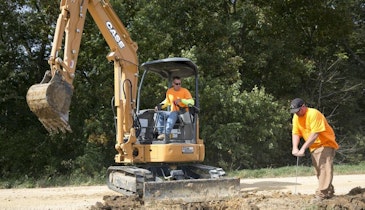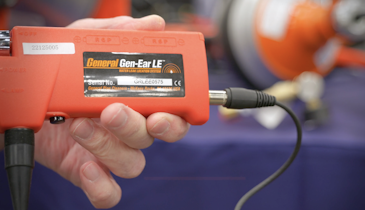Question:
I installed a drop box system in good soil for a family who moved from the city to a new home in the country. After about a year, the effluent is surfacing from the last trench. I have checked and all of the trenches are full of effluent. Should this system be repaired, rejuvenated or what should be done?
Answer:
First, let’s assume the system was properly designed and properly installed in a suitable soil. If this is true, then I believe just too much water is being turned into sewage.
Many homeowners who move from the city to the country and an onsite sewage treatment system do not realize how much water they waste. My first suggestion is to install a water meter to measure all the water used in the household. Take readings for at least a week and preferably longer to get an average daily water use. Compare this value to the amount for which the system was designed.
I suspect the household is using a lot more water than it should. If this is true, give the homeowners information on water-saving techniques. Water saving does not mean their quality of life will be decreased. If they are willing to take measures to reduce their water use to the design value, or less, for the onsite system, the trench system should work fine.
If they are not willing to be careful in their water use, additional trenches will need to be added to the system.
I will relate two experiences of excessive water use. The first was a family with four teenagers. Sewage began to surface on the lawn. The onsite system was of proper design for the home. From the family’s lifestyle, it was apparent water use was excessive. The only place to expand the system required the removal of a grove of conifer trees. The homeowners did not want to lose those trees.
I suggested a water meter be installed. Water use was found to be about double the design value. Apparently the main culprit was the number and length of showers being taken. Appropriate water-saving techniques, including low-flow showerheads and restricted shower time, were implemented. The household water use was reduced to less than the design value and the sewage stopped surfacing.
The other experience was rental property. The family had two small children. The mother changed their clothes several times a day. After each change, the few dirty clothes were washed in the automatic washer. I explained to the property owner the problem of sewage surfacing was likely excessive water use. The property owner did not want to change the lifestyle of the renters, so the only alternative was to enlarge the soil absorption system.
Question:
What is the best way to rejuvenate a failing septic system?
Answer:
It depends on how the system is failing. If the system is many years old and the outlet baffle of the septic tank is no longer intact when the tank manhole is opened for cleaning, then the drainfield could be full of sewage solids.
It is difficult and nearly impossible to remove sewage solids that are in the rock layer of a drainfield trench. The so-called distribution pipe could be opened on each end of a trench and the solids flushed out with water. The solids in the rock would remain there, however.
Time is needed for the solids in the rock layer to dry out and decompose. If the trench can remain open and unused for a year or longer, it may recover some of its capacity to take septic tank effluent. If the trench was properly constructed and there is sufficient area on the lot to add more trenches, leave the failed trench or trenches in place. Reconnect the trenches into the system at a later date. They will again treat some sewage.
Question:
When I pump septic tanks I sometimes see a wet spot on the lawn. Does this mean the system has failed? What should I tell the homeowner?
Answer:
The homeowner should definitely be told about the surfacing sewage and the health hazard involved for the family. I would suspect, however, they are already aware of the problem.
Surfacing sewage does not necessarily mean the system has failed. If the septic tank effluent flows to a distribution box, the box should be uncovered. Check to see if most of the effluent is flowing out of one of the outlets. The trench where the sewage is surfacing may be getting most of the septic tank effluent and the other trenches in the system may be practically dry.
What can be done about this? First of all, place a cap on the outlet pipe where most of the effluent flows out of the distribution box. Then observe if the flow is about equal out of the other outlet pipes. If not, obtain special pipe caps with openings that can be adjusted so all outlets are at the same elevation. Adjustable caps are available from suppliers of equipment for onsite systems.
After the capped trench has dried out for at least a year, place an adjustable cap on the outlet pipe to that trench. The problem of sewage surfacing should be solved.





